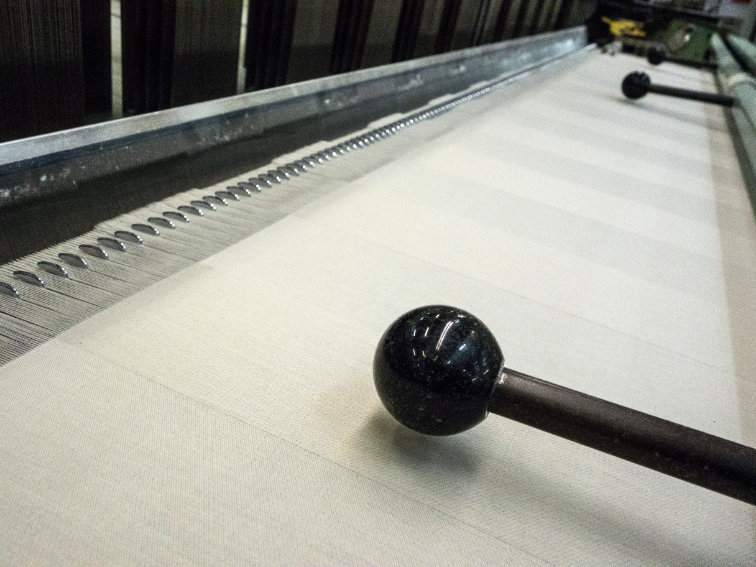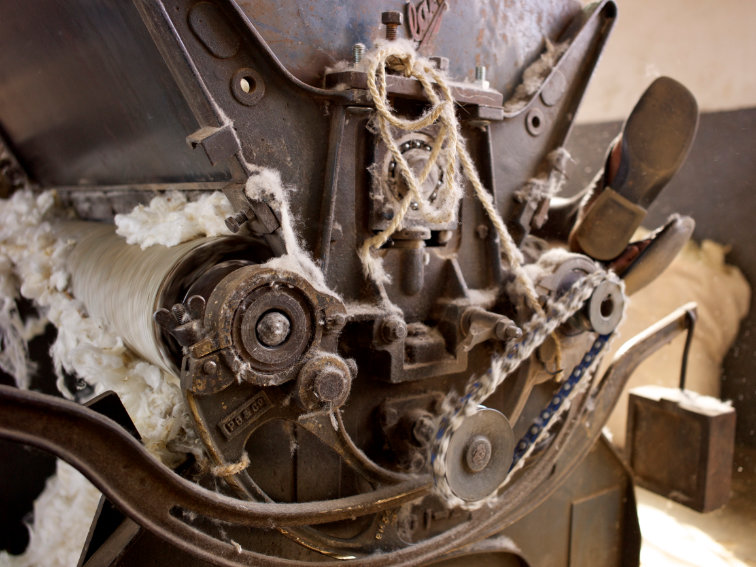
Spinning the organic cotton fibres
Organic cotton fibres are spun into yarns in our spinning mill. Many work stages are necessary for this.
The spinning mill Further work stages
Organic cotton fibres are spun into yarns in our spinning mill. Many work stages are necessary for this.
The spinning mill Further work stagesFor every product we use the yarn that provides that product with the best characteristics: OE-yarn for roughened products, for a fluffy and three-dimensional surface, for example for our fine flannelette bedding. Normally this type of yarn is produced using the shortest fibres, to reduce costs. We, however, use fresh, long organic cotton fibres which require special and uncommon machine settings and appliances. This produces an unparalleled feeling on the skin, that does not require chemical amplifiers.
The yarn for most Cotonea fabrics is produced using a special, further-developed ring spinning process. This ensures that the fibre’s twist is perfect throughout the whole yarn. If a higher strength is needed for a product than can be provided by single yarn, twisted yarn is used. For this single yarn is plied, this means the yarn is twisted together. Twisted yarn does not feel as soft but is very durable.
The fineness range of the Cotonea yarns ranges from Nm7 (number metric - this means one gram of cotton yarn is 7 metres long) for heavy molleton fabrics to Nm170 (1 gram of yarn is 170 metres long) for poplin for fine blouses. The yarn that is used for this is plied. The rule in general is: the longer the yarn per gram, the thinner and finer the threads. The opposite is also true for heavier yarns.
But how are the cotton fibres made into Cotonea’s high-quality yarn? In the spinning mill the large cotton bales are first pulled apart and cleaned by machines. With Cotonea organic cotton, no harmful substances are used in this step. The raw fibres are evened out in a mixing chamber, then laid out evenly next to each other and pressed to fleece using a carding machine (parallelized). In the OE-spinning process, the fleece is inserted directly into the spinning machine and is spun into yarn after separating the single fibres. In the ring spinning process, the fleece is used to spin rove (pre-yarn) on a so-called flyer spinning frame. The actual yarn is first produced on the ring spinning machine, only using twisting and stretching without a single fibre separation.

Cotonea organic textiles are woven in our own weaving factory in the Czech Republic by our partners.
Find out more
Separation of organic cotton fibres and seeds in our own Fair Trade projects.
Find out more